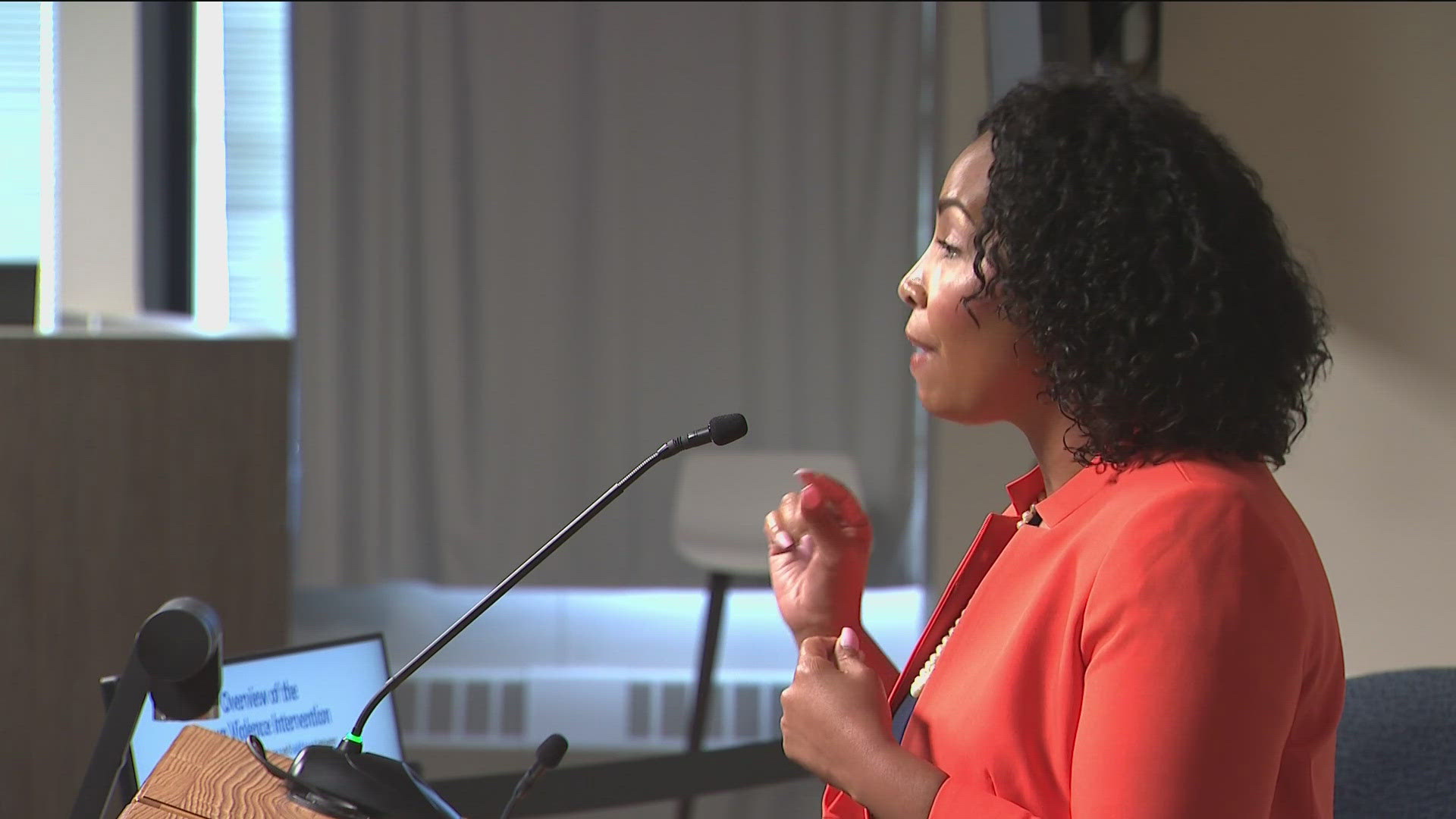MINNEAPOLIS — National violence prevention organizations gave a presentation to the Minneapolis Public Health and Safety Committee Wednesday calling on communities to start viewing gun violence as a public health issue.
“We understand this has been a crisis for a lot of our communities,” said Dr. Monique Williams with Cure Violence. "The surgeon general kind of officially declared gun violence a public health crisis.”
Her organization works with cities to implement violence prevention strategies. Williams was one of six women who spoke about violence prevention and ways Minneapolis can implement their strategies.
Williams said her organization is in negotiations with the neighborhood safety department.
“Our Neighborhood Safety Department is evolving,” said Toddrick Barnette Community Safety Commissioner with the Minneapolis Office of Community Safety. “We are now solely focused on developing a plan to address immediate needs, long-range planning for sustainability and ensuring that the organizations that are working hard to support safety in our community are successful.”
Barnette said they will focus on what is best for the people who live in Minneapolis, and are intentional with their plans going forward.
“The shootings have to stop,” said Sasha Cotton, the executive director of the National Network for Safe Communities at John Jay College.
She gave a presentation on group violence intervention (GVI), an evidence-based strategy to reduce violence and build trust between communities and criminal justice agencies.
"If we can identify those people who are most vulnerable and susceptible to using violence, and focus our attention on them versus blanketing communities with law enforcement or even resources, we can be finite with our resources,” Cotton said.
Cotton says GVI was previously implemented in Minneapolis, but the approach has been on hiatus for a few years.
She pointed out that when GVI was implemented in the city non-fatal group member involved (GMI) shootings went down. Prior to GVI being implemented there were 93 GMI non-fatal shootings in 2016. That number dropped to 27 in 2019.
“Across America, including Minneapolis, saw record lows in group member involved homicides and shootings pre-pandemic, and we believe wholeheartedly through partnership we can get back to those kind of numbers in Minneapolis,” Cotton said.
The chart Cotton showed the committee also shows there were 12 GMI homicides in 2016 and 11 in 2019.
Shantay Jackson with the National Offices of Violence Prevention Network (OVP) said her organization works to reduce violence while improving lives.
She said OVP has offices located across the country, and two of them are in Minnesota. Jackson said she works closely with the office in St. Paul but not Minneapolis.
“The Minneapolis OVP is a member of the network. I'll also share unfortunately it's not an active member,” she said.”
Jackson said she would like to see the city rejoin their efforts. She said cities with OVP offices contribute to a reduction in violence. For example, Jackson said Baltimore has seen a 36% drop in homicides and non-fatal shootings so far this year.
Director of the Neighborhood Safety Department, Luana Nelson-Brown, released a statement commending the groups for coming together to discuss a safety plan.
“The safety of our community members is our mission. It takes a village to create and maintain the community safety ecosystem that the Office of Community Safety is working hard to build. So, I appreciate these groups, including our partners, coming to provide their perspective on alternative policing to City Council," Nelson-Brown said. "OCS’s Neighborhood Safety Department (NSD) has more than 70 contracts with community-based service providers who provide services ranging from gun violence intervention, hospital-based services, violence interrupters and behavioral crisis response. We have current and soon-to-be approved contracts with some of them and look forward to continued collaboration in this important work. A truly safe community can only be found through everyone’s involvement – a tenet central to our approach of building out the capabilities of the new Neighborhood Safety Department."

